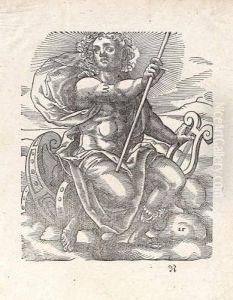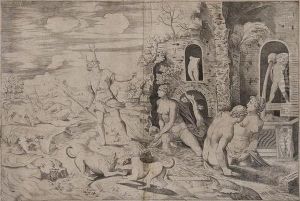Antoine Lafrery Paintings
Antoine Lafrery, also known as Antoine du Pérac Lafréry or Ant. Lafreri, was a French engraver, publisher, and dealer known for his work in the field of cartography and printmaking during the Renaissance period. Born in 1512 in Besançon, which was then part of the Holy Roman Empire, Lafrery moved to Rome, Italy, around 1540, where he became an influential figure in the production and dissemination of graphic prints, maps, and books.
In Rome, Lafrery established himself as a printmaker and worked with several important figures of the time, including the renowned cartographer Giacomo Gastaldi. His shop became a center for the production and sale of engravings, many of which were based on the works of prominent artists like Michelangelo, Raphael, and Titian. Lafrery's prints were not limited to religious and mythological subjects; they also included a significant number of maps and topographical views.
One of Lafrery's most significant contributions to the history of cartography was the compilation of a collection of maps known as the 'Speculum Romanae Magnificentiae' (The Mirror of Roman Magnificence), which offered a comprehensive view of the antiquities and architecture of Rome. This collection served as an important record of Renaissance Rome and was highly influential, being copied and reissued by numerous publishers for many years after Lafrery's death.
Antoine Lafrery was also instrumental in the spread of the Roman style of engraving across Europe. His works were characterized by their high level of detail and the fusion of Italian Renaissance artistry with Northern European precision. He is also known for having amassed a considerable collection of plates from other artists and printers, which he reissued under his name, further contributing to his reputation and the diffusion of Renaissance art.
Lafrery died in 1577 in Rome, leaving behind a legacy as a key figure in the world of Renaissance printmaking and publishing. His work continued to influence the production of maps and prints long after his death, and his prints remain valuable to scholars and collectors alike for their historical and artistic significance.

